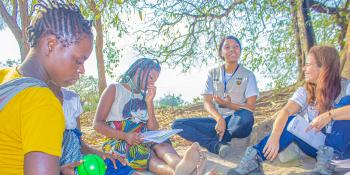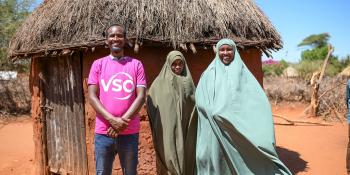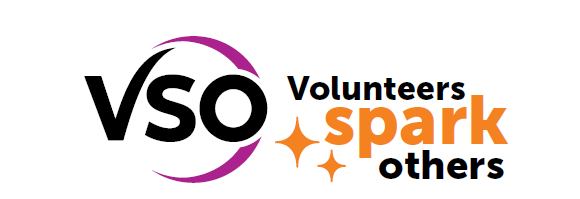After a 40-year career in the NHS in the UK, Phil Heywood, 72, is volunteering his skills to help tackle maternal deaths in Myanmar. He explains the global injustice of maternal deaths, and what is being done about it through UK Aid.
What makes you angry? I am recurrently furious that the world ignores the deaths of more than 200,000 women every year. I’m angry because most of these deaths are preventable.
When motherhood is fatal
UK Aid is investing in an end to thousands of needless deaths. I know, because I am part of it.
A maternal death is a rare tragedy in rich countries. In the UK, one woman dies for every 10,000 pregnancies.
In South Sudan, where I volunteered with VSO, a woman died for every 50 pregnancies. Many women have more than five pregnancies; so their lifetime risk of a pregnancy death is one in ten.
Pregnancy-related deaths tear families apart. Families in the developing world grieve no less than those in affluent countries. Motherless poor children are at least as disadvantaged as the motherless rich.
How much would it cost to save those lives? For me, it seems obscenely cheap.
How to reduce the death rate
It is crucial to provide a skilled birth attendant for every pregnancy and every delivery. This is usually a midwife. Developing countries need many more, and many current birth attendants need better skills.
UK Aid is investing in an end to thousands of needless deaths. I know, because I am part of it.
I volunteered having retired after 40 years as a NHS general practitioner. Through VSO I spent more than three years in Cambodia, a few months in South Sudan and a year in Myanmar - all to cut maternal deaths.
I don’t see patients. I don’t have photos sitting with pregnant women, or handling newborn babies! But I’m always thinking about their wellbeing.
Strengthening the supply of skilled birth attendants in Myanmar
I work on strategy and policy, and I train the people who train those critically-needed skilled birth attendants. My professional life was in the community, and I have a unique perspective on this work.
Today I’m working in Mandalay Midwifery Training School, Myanmar. I’m helping the staff develop their skills to be more effective teachers.
I watch them, I talk with them, run workshops, encourage them to try innovations. I networked a few PCs and laptops into an E-library and I write policies and procedures. I have met the Minister of Health & Sport and Mandalay’s Chief State Minister to advocate for midwives.

From anger to action
Am I effective? I may never know my personal contribution. I’m always part of a team.
That doesn’t stop me putting my heart and soul into the work and it helps me channel my anger for good.
I do know that during my time in Cambodia the maternal death rate was halved. How can we ever know what tragedies we have prevented?
Why are you Proud of Aid?
Do you have your own story to share? Use the hashtag #ProudofAid to join the debate on social media.
Latest posts

The two volunteers empowering girls and young women in Mozambique
Nelma and Carmirene and are two volunteers working on VSO's EAGLE project in Mozambique. For Nelma and Carmirene, education is not just about school, it is about meeting people where they are and using the right tools to challenging harmful norms. Here are their stories.

A ripple of change: how VSO volunteers are transforming communities
Every act of volunteering begins with a choice — a decision to act out of a desire to make a difference. Across the world, VSO volunteers are proving that one spark of action can ignite something much bigger.
Opening doors to safety, education, and a brighter future
For girls in Karamoja, the poorest region in Uganda, being forced into early motherhood is all too common. This Christmas, you can open the doors to Safety, Education, and a Brighter Future.
